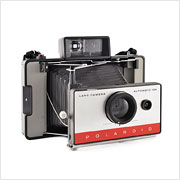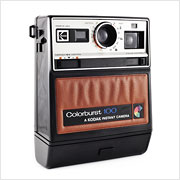Polaroid Spectra
The Polaroid Spectra is the first model in the Spectra System line (also known as “Image System” and the Minolta Instant Pro in overseas markets) of instant cameras introduced by Polaroid in 1986. With this new line of cameras came a new line of instant film named Spectra/Image/1200 film which, apart from producing rectangular instead of square images, is more or less identical to existing 600 series film.






